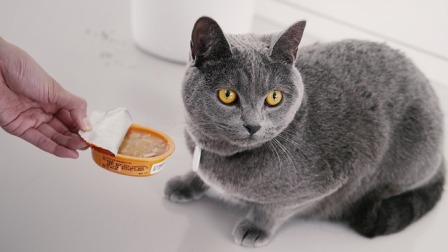How to Prevent a Cat from Being a Finicky Eater
How to Prevent a Cat from Being a Finicky Eater
Every cat can become a finicky eater because of numerous reasons. According to experts, there are common issues that cause a cat to refuse food. Sometimes, shape and size of bowls can turn the cat away from food. The cleanliness and position of the bowls are also very important because cats do not like dirty dishes and are confused when the eating area and the toilet are too close to each other. Often, when they get food directly from a refrigerator, they can refuse to eat, for cold food loses its flavor and cats’ sharp senses know when food is not fresh. Many cats become finicky eaters because their owners stick to one brand. When the brand manufacturer changes the food formula, they can get into serious problems. Their cats will refuse to eat food that has changed its taste and texture. On the other hand, they will refuse to eat some other food, because they have been accustomed to one and only type of food. To prevent a cat from being a finicky eater, the article “How to Solve Cat Behavior Problems” gives us a useful advice.
How to Prevent a Cat from Being a Finicky Eater
Try the 20-minutes-and-up method. If you find yourself opening six cans at every meal and following your cat around the house, trying to coax her to have a nibble, you’ve got a serious finickiness problem going. At the next meal, put down a food you know the cat has eaten before. Wait 20 minutes, and then pick up the food and do not give any other food, snacks, or treats until the next meal. Repeat the process at that meal and every subsequent meal.
Be prepared for an all-out tantrum by your cat — loud meowing, attempts to steal food, being an incredible pest, the works. Be strong and don’t cheat to try to appease her. This method has a remarkable success rate. Many owners see improvement after three days, although some cats may persevere for several weeks.When to Call the Vet
If a previously good eater suddenly becomes finicky or finickiness persists despite the 20-minutes-and-up method, your cat may have a physical problem and need veterinary care. Any cat who quits eating completely or has a loss of appetite accompanied by other symptoms of illness should be seen by the veterinarian right away.
To help a cat trying new food, experts suggest put the old and the new food together, next to each other. Having in mind that the cats do not like abrupt changes, gradually increasing the quantity of new food will enable her/him to get used to it easier. Sometimes, cats simply will not eat because they are not hungry, or the meal is served out of its schedule. Cats like routine and they enjoy eating at the same time every day. If they find food that stays in the bowl for longer than 30 minutes, they will simply reject it. It is up to us, cat owners, to understand their eating habits and adjust feeding routine to their natural affinities.










